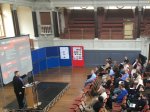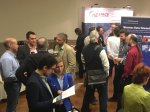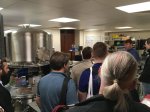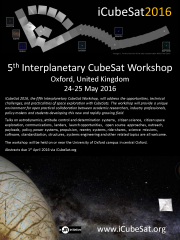iCubeSat Program 2016



iCubeSat 2016 was held over two days at the University of Oxford, United Kingdom. Please note that this conference was an open conference and did not wish to discuss information restricted by ITAR or other export controls. U.S. citizens and permanent residents were responsible for ensuring that technical data presented was not restricted by ITAR and that ITAR controlled information was not discussed with non-U.S. citizens. All conference attendees ensured that their presentations and discussions complied with the relevant export controls of their own country, the United Kingdom and the European Union and those using the comments facility of the website are reminded that they should do the same.

Download the conference poster here.
Tuesday, 24th May 2016
| 9:30 | Registration | |
| 10:00 | Welcome Michael Johnson, PocketSpacecraft.com / Imperial Colin Wilson, University of Oxford |
|
| 10:20 | A.1.1. Achieving Science with CubeSats: Thinking Inside the Box Thomas H. Zurbuchen, University of Michigan, U.S.A. |
|
| 10:40 | A.1.2. Venus – many science goals for CubeSats / smallsats Colin Wilson, University of Oxford, U.K. |
|
| 11:00 | A.1.3. Sampling Venus’ atmosphere with a low-cost probe mission Anthony Freeman, NASA-JPL/Caltech, U.S.A. |
|
| 11:20 | Break | |
| 12:00 | A.2.1. The Asteroid Geophysical EXplorer (AGEX) to explore Didymos Ozgur Karatekin, Royal Observatory of Belgium, Belgium |
|
| 12:20 | A.2.2. ASPECT – Spectral Imager CubeSat Mission to Didymos Antti Kestila, Aalto University, Finland |
|
| 12:40 | A.2.3 MarMoSe: investigating Mars’s moons Daniel Zsenits & Ryan Kavanagh, U.S.A. |
|
| 13:00 | Lunch | |
| 14:40 | A.3.3. SERB, a nano-satellite to observe the Sun and the Earth: interest for an orbit around the Lagrangian L1 point and the Sun Mustapha Meftah, CNRS-LATMOS, France |
|
| 15:00 | A.3.4. Space Travel on a Shoe String: CubeSats Beyond LEO Massimiliano Vasile, University of Strathclyde, U.K. |
|
| 15:20 | A.4.1. Astrodynamics of Interplanetary CubeSats Francesco Topputo, Politecnico di Milano, Italy |
|
| 15:40 | Break | |
| 16:20 | A.4.2. Orbit Determination for a deep-space CubeSat Boris Segret, Paris Observatory LESIA-ESEP, France |
|
| 16:40 | A.4.3. Ballistic Landing Opportunities for Underactuated Spacecraft in Binary Asteroids Joan-Pau Sanchez, Cranfield University, U.K. |
|
| 17:00 | A.4.4. Numerical analysis of the compliance of interplanetary CubeSats with planetary protection requirement Francesca Letizia, University of Southampton, U.K. |
|
| 17:30 -19:00 |
Social | Walking tour of Oxford and colleges starting at workshop and finishing at informal dinner restaurant |
| 19:00 -21:00 |
Social | Informal dinner in central Oxford (Please note that the GBP 20 cost of the dinner is not included in the registration fee) |
Wednesday, 25th May 2016
Posters
| P.1.1. A Miniaturized Impedance Probe for Ionospheric Sensing Jonathan Camilleri, University of Birmingham, UK |
| P.1.2. Applying MBSE in space observation projects: European Extremely Large Telescope – World’s Biggest Eye on the Sky Edith Mileviciene, No Magic Europe, Lithuania |
| P.1.4. CubeSat deployed Mars microlander networks Michael Johnson, Imperial College London / PocketSpacecraft.com, U.K. |
| P.1.5. Detection and Tracking of Moving Target using Track Before Detect (TBD) method Naima Amrouche, National Polytechnic School of Algiers/CNRS, France |
Please do not hesitate to contact committee@iCubeSat.org if you have any comments or questions.